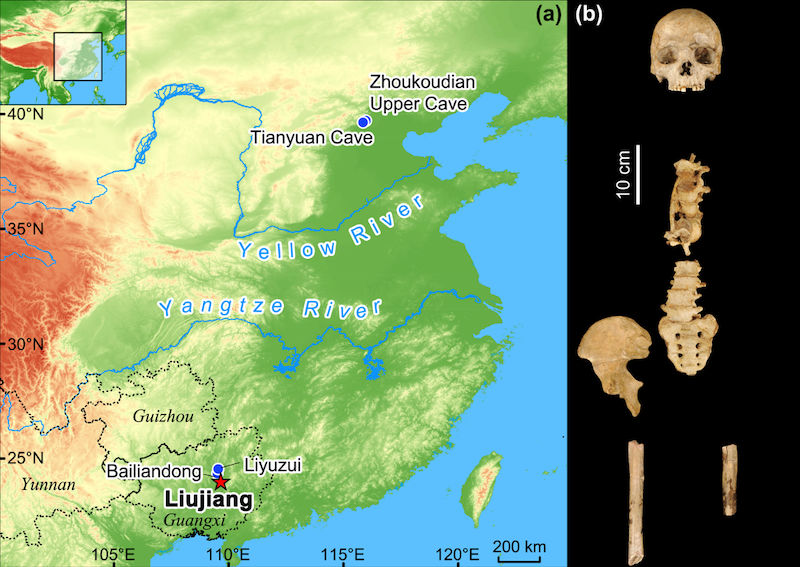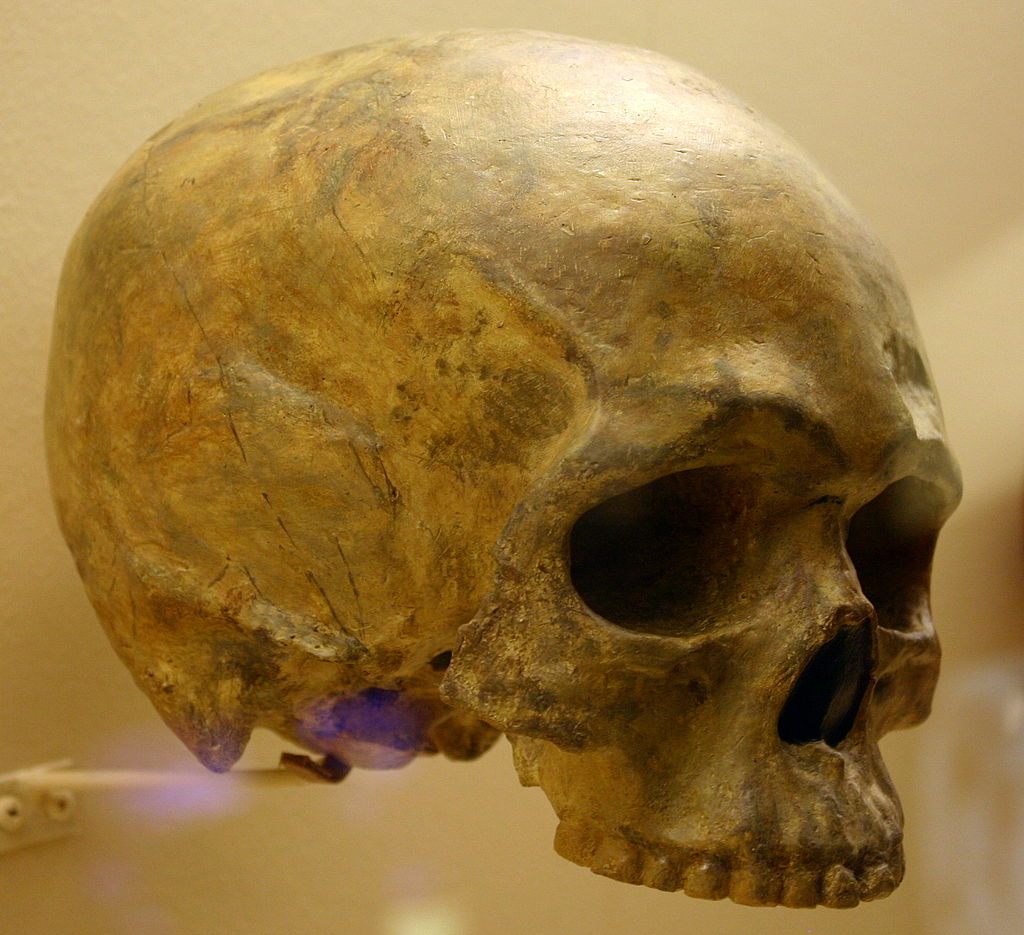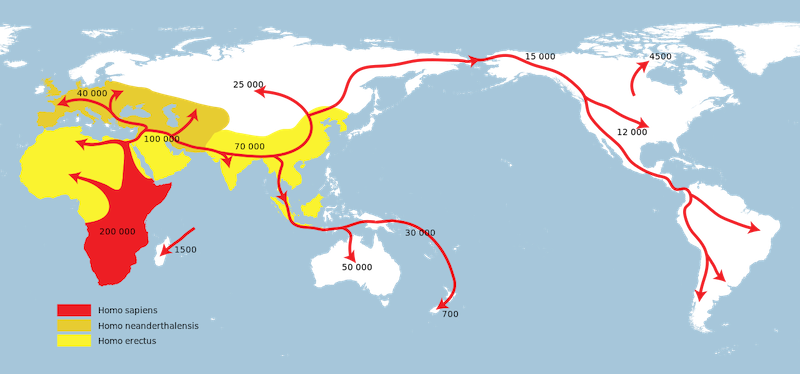Liujiang skeleton re-dates earliest Homo sapiens in China
The Liujiang skeleton, a significant fossil in understanding early modern humans in East Asia, has been aged at 33,000 to 23,000 years old.
The post Liujiang skeleton re-dates earliest Homo sapiens in China first appeared on EarthSky.

When did humans first arrive in East Asia?
A new study has shed light on the date of the ancient Liujiang skeleton – a significant human fossil found in a cave in China – altering our understanding of the migration of early modern humans (Homo sapiens) to East Asia. The new study has placed the skeleton’s age at 33,000 to 23,000 years old.
Previously, the age of this skeleton was a matter of debate. Some studies had suggested it was as old as 227,000 years, but that age was debated. The new results, published in the peer-reviewed journal Nature Communications on April 29, 2024, put the skeleton’s age in the same range as other ancient modern human remains in China. The authors wrote:
Populations of H. sapiens were clearly present from north to south China during this period, ranging across latitudes extending from ~40 to 24 degrees north, and in different ecosystems ranging over a distance of ~1,800 km [1,100 miles]. The new dating information indicates that the Liujiang remains are from a major dispersal event of modern humans in Eurasia around 40,000 to 30,000 years ago.
Junyi Ge of the Chinese Academy of Sciences is lead author of the study. He said in a statement from Griffith University in Queensland, Australia:
This finding holds significant implications for understanding human dispersals and adaptations in the region. It challenges previous interpretations and provides insights into the occupation history of China.
Who was the Liujiang skeleton?
Scientists think, based on skeletal features, that the Liujiang fossils belonged to an adult male. He was about 40 years old at the time of death. Workers digging for phosphorus fertilizer in Tongtianyan Cave in 1958 discovered his remains. That’s in the Liujiang District of Liuzhou City in southern China.
Little is known about the life of this early modern human, since no artifacts such as tools were found with him. But in death, he has become one of the most important human fossils in the study of early modern human migration. That’s because a significant portion of his skeleton was preserved: most of the skull, sections of backbone, a few ribs, a hip bone, sacrum, and upper leg bones.
The bones provide valuable information on early modern humans’ features.

Getting a more accurate age on the Liujiang skeleton
Measurements, photos, and sediment samples from a fossil’s location are useful in helping to determine a fossil’s age. But when these bones came to light in 1958, scientists who visited the cave to inspect the Liujiang skeleton found that the site had been quite disturbed and valuable data lost.
For the recent study, scientists used the latest available dating techniques to reevaluate its age. They had two goals:
- First, they wanted to find and determine the age of the likely cave sediment layer that once held the skeleton.
- Second, they wanted to date the skeleton directly.
To aid in their first goal, researchers recovered bits of yellowish-brown clay stuck to the fossils. They evaluated the characteristics of this clay and were able to find a likely match in one of the cave’s sediment layers. In the lab, they then dated that layer, using three different dating techniques, to between 32,500 to 22,600 years old.
Next, they subjected samples of bone and teeth directly to yet another dating technique. Those results yielded an approximate burial age of 23,900 years. Combined with the results from sediment analysis, scientists were able to age the Liujiang skeleton at 33,000 and 23,000 years old.
The puzzle of ancient human migration
The Liujian skeleton is an important part of understanding the larger story of early modern human migration. Modern humans, according to many researchers, likely first emerged in Africa about 300,000 years ago. They subsequently migrated out of Africa to occupy other parts of the world.
And that’s where the story gets even more complex.
That is, because ancient human remains are scarce, it’s hard for scientists to ascertain when humans arrived at different geographical regions, using fossil evidence alone. Whatever ancient human remains have been found are often not well preserved.
So, these scientists say, understanding the movements of ancient peoples requires a multi-disciplinary approach. That includes studying the effects of climate and environment. The development of cultures, technology, and language are also valuable clues.
Dating migration with DNA
Scientists also use genetic studies in studying human migration. One field of DNA research, known as genetic anthropology, studies genetic markers in thousands of present-day people to peer into ancient migration patterns of their ancestors.
It’s also possible, in well-preserved fossils, to directly extract DNA samples. That’s how we know that ancient modern humans interbred with now-extinct Neanderthals and Denisovans. Many of us today continue to carry the DNA of these long-gone human species.

Bottom line: A new study dates the Liujiang skeleton, a fossil critical to understanding early modern human migration in Eastern Asia, to between 33,000 and 23,000 years old.
Source: New Late Pleistocene age for the Homo sapiens skeleton from Liujiang southern China
The post Liujiang skeleton re-dates earliest Homo sapiens in China first appeared on EarthSky.
